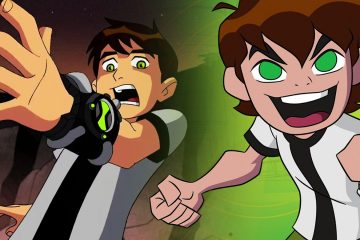A wealth of new Doctor Who content is being released to mark the sci-fi series’ 60th anniversary. In addition to three new specials starring returning Doctor and companion duo, David Tennant and Catherine Tate, the BBC has added every available classic story to BBC iPlayer, released a new mini series titled Tales of the TARDIS, and re-edited the 50th anniversary’s biopic, An Adventure in Space and Time, to include new Doctor, Ncuti Gatwa. Additionally, the BBC recently aired a colorized version of Doctor Who’s first ever Dalek story, recut from a seven-part serial into a 75-minute feature film.”The Daleks” originally aired from Dec. 1963 to Feb. 1964, introducing the Doctor’s most infamous enemies to the world. The serial — which was only the second Doctor Who story ever released — featured William Hartnell’s First Doctor, alongside his granddaughter Susan (Carole Ann Ford) and human companions Ian Chesterton (William Russell) and Barbara Wright (Jacqueline Hill). It saw the TARDIS crew arriving on the dangerously irradiated world of Skaro, which had been devastated by a neutron bomb in a war that had raged for 500 years. Mutated by the radiation, the Daleks had been forced into armored casings in order to survive. The colorized version was not only edited down, but featured new dialogue, visual effects and music.Inevitably, turning seven episodes totaling around 175 minutes of runtime into a 75-minute feature means cutting a lot of material. Many of the cuts made to “The Daleks” are minor, with smaller moments being removed from larger scenes, sometimes with fragments of dialogue being added over the top of other shots to fill in missing information. However, larger segments have been removed as well, both to keep the story to its 75-minute time frame and to ensure it stands alone as a single feature-length story, eliminating links to the Doctor Who stories that came before and after.Russell T Davies Found the Perfect Way To Revisit Past Doctor Who ErasDoctor Who Christmas Special Title Revealed, Hints at a Brand New Era
A wealth of new Doctor Who content is being released to mark the sci-fi series’ 60th anniversary. In addition to three new specials starring returning Doctor and companion duo, David Tennant and Catherine Tate, the BBC has added every available classic story to BBC iPlayer, released a new mini series titled Tales of the TARDIS, and re-edited the 50th anniversary’s biopic, An Adventure in Space and Time, to include new Doctor, Ncuti Gatwa. Additionally, the BBC recently aired a colorized version of Doctor Who‘s first ever Dalek story, recut from a seven-part serial into a 75-minute feature film.
“The Daleks” originally aired from Dec. 1963 to Feb. 1964, introducing the Doctor’s most infamous enemies to the world. The serial — which was only the second Doctor Who story ever released — featured William Hartnell’s First Doctor, alongside his granddaughter Susan (Carole Ann Ford) and human companions Ian Chesterton (William Russell) and Barbara Wright (Jacqueline Hill). It saw the TARDIS crew arriving on the dangerously irradiated world of Skaro, which had been devastated by a neutron bomb in a war that had raged for 500 years. Mutated by the radiation, the Daleks had been forced into armored casings in order to survive. The colorized version was not only edited down, but featured new dialogue, visual effects and music.
Inevitably, turning seven episodes totaling around 175 minutes of runtime into a 75-minute feature means cutting a lot of material. Many of the cuts made to “The Daleks” are minor, with smaller moments being removed from larger scenes, sometimes with fragments of dialogue being added over the top of other shots to fill in missing information. However, larger segments have been removed as well, both to keep the story to its 75-minute time frame and to ensure it stands alone as a single feature-length story, eliminating links to the Doctor Who stories that came before and after.
#Change #Daleks #Colorization #Doctor #Explained
Note:- (Not all news on the site expresses the point of view of the site, but we transmit this news automatically and translate it through programmatic technology on the site and not from a human editor. The content is auto-generated from a syndicated feed.))



